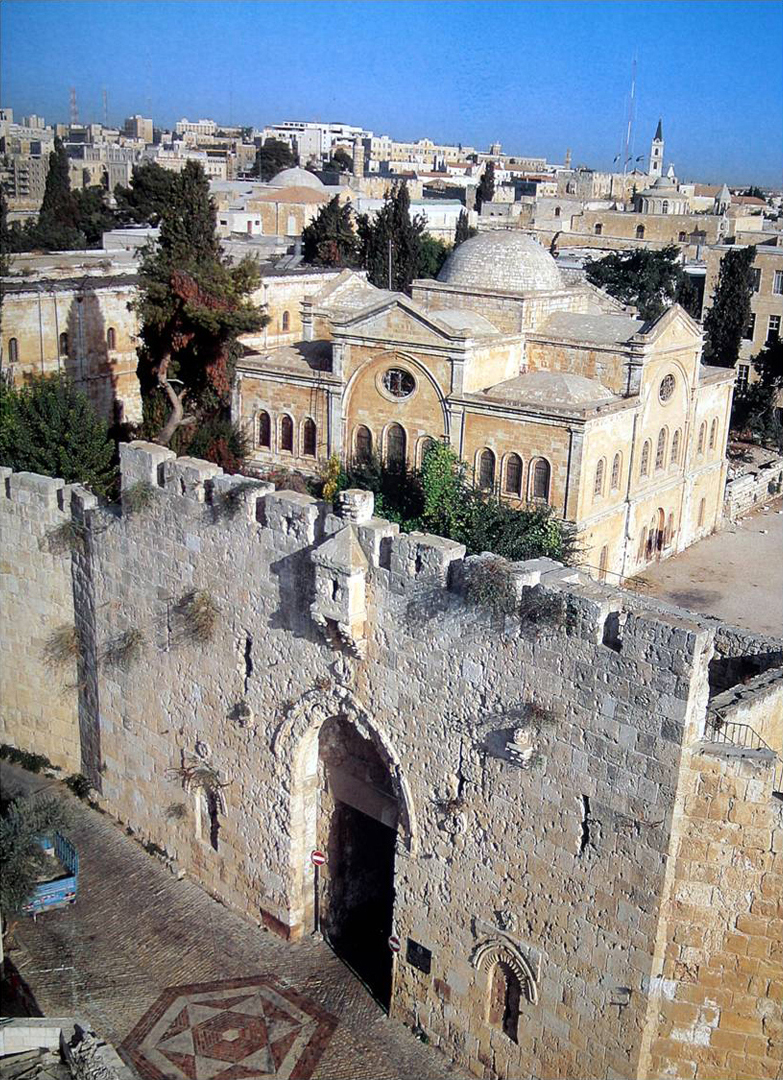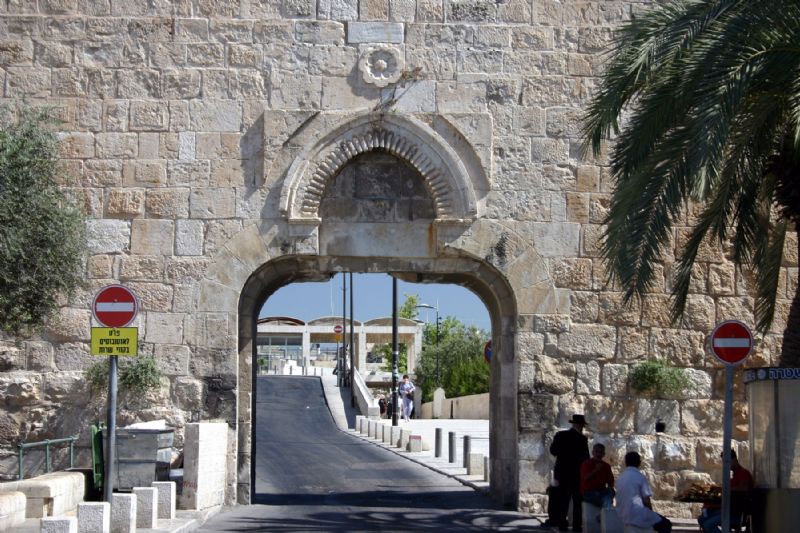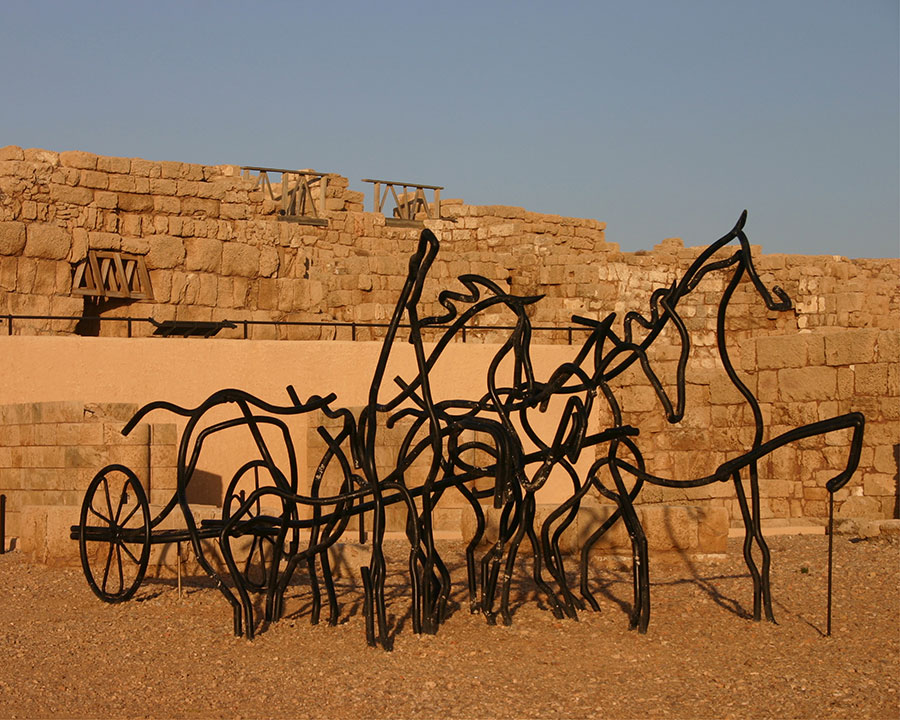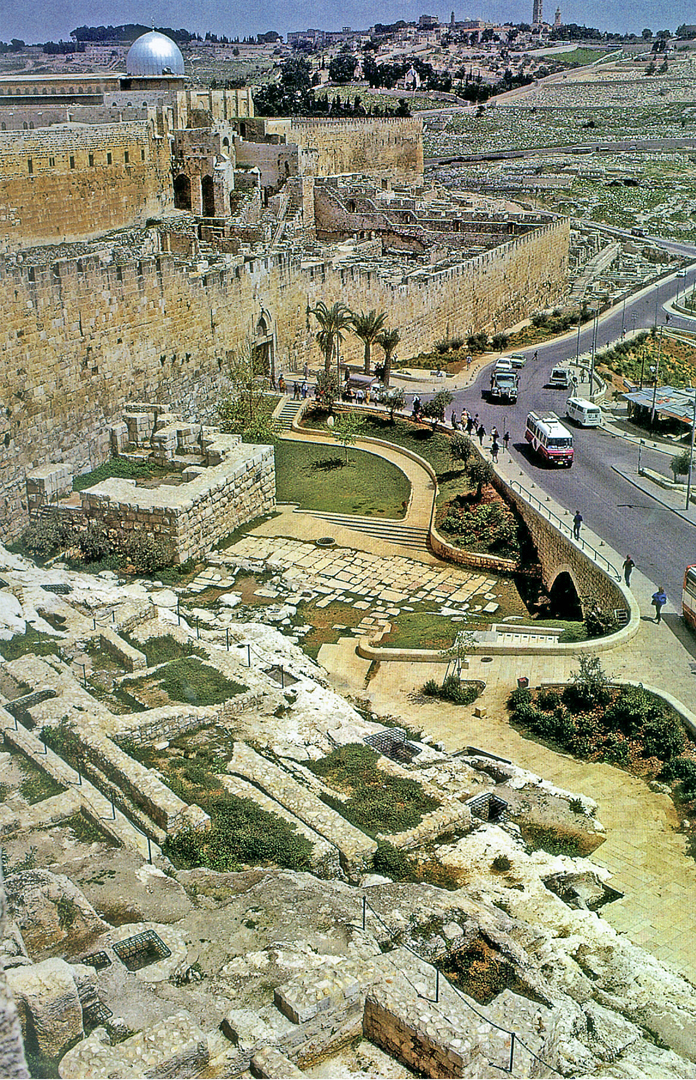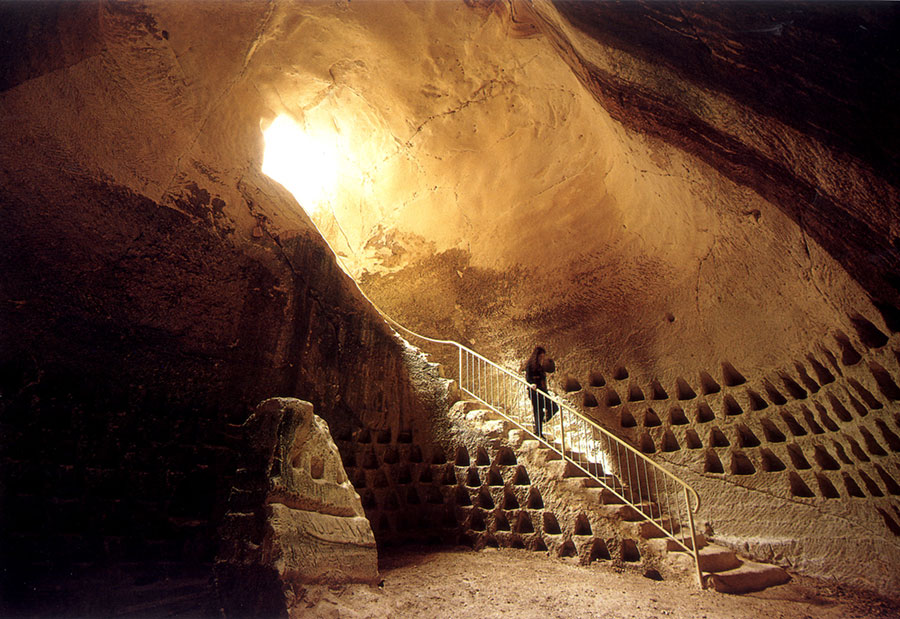Zion Gate
Zion Gate on the Southwest side of the walls of the Old City of Jerusalem, was severely damaged during Israel's War of Independence in 1948. As a testimony to the modern history of that historic place, It was decided to leave the walls, battered by bullets, as they were. The focal point of the renovation thus became the paving before the gate. No original stone paving was discovered on the site, but an analysis of the survey drawing led to the conclusion that several site lines converged in a single point. This point may have been the spot from which the Turkish engineer, some five centuries ago, laid out the plan for the gate. The star-shaped pattern which results from tracing out these site lines became the motif for the paving pattern in front of the gate, homage to an ancient colleague, and at the same time, a reminder of a symbol that anchors the work in our time....



